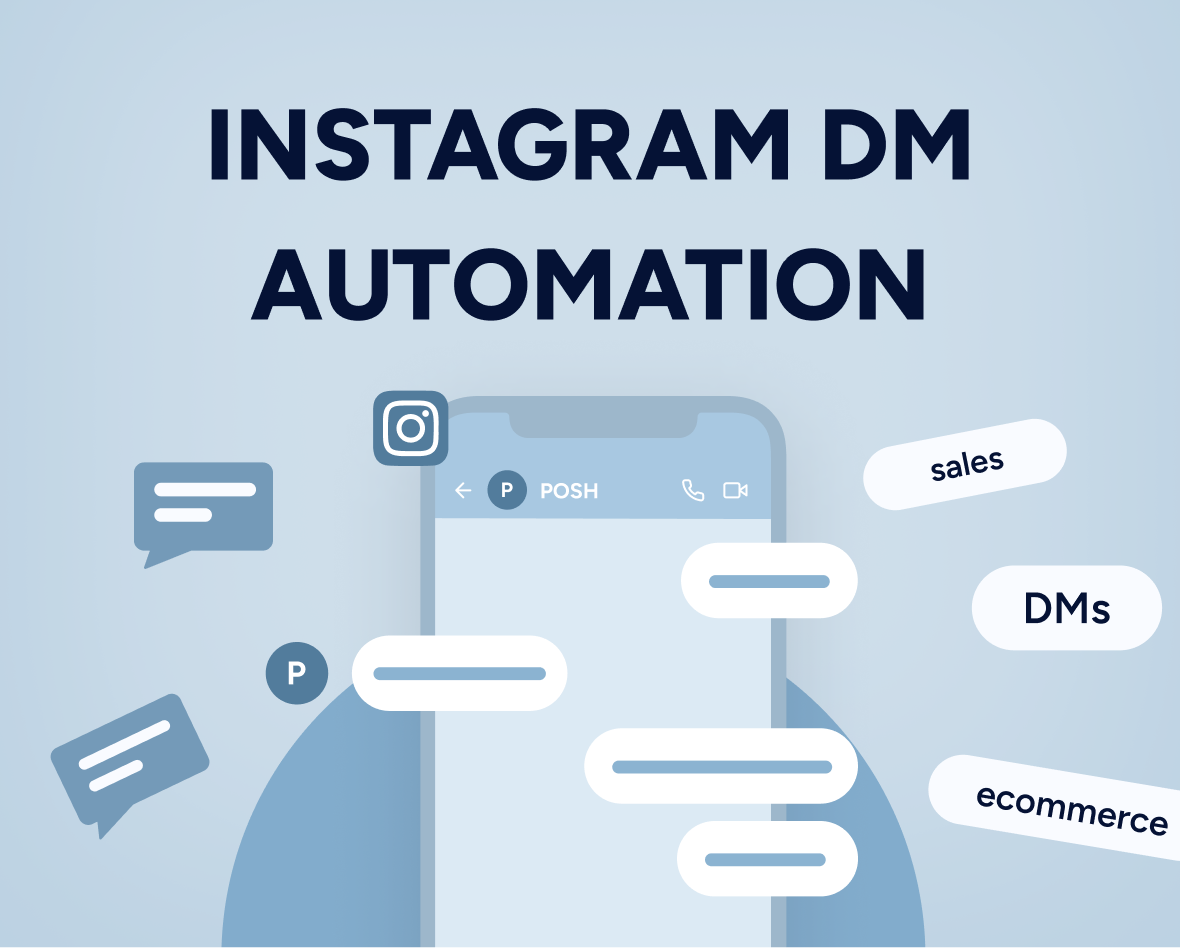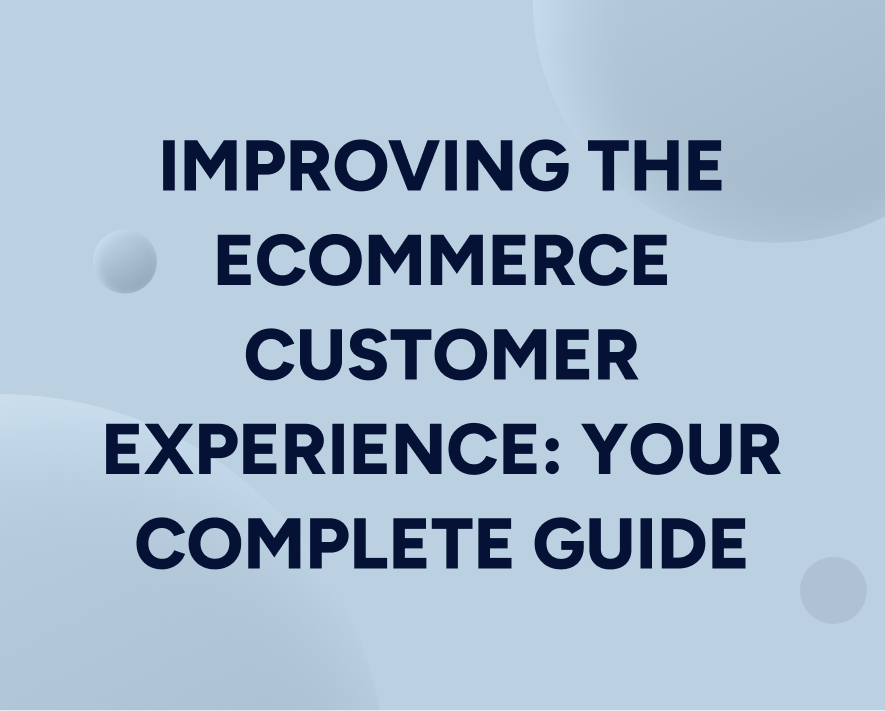The essential guide to customer data integration (and its impact)
Your customer data lives in many places — from transaction systems and customer relationship management (CRM) software to social media analytics and email marketing platforms. Each silo holds a piece of the puzzle that is your customer’s journey. Yet, without a holistic view of customers, your marketing efforts are like shots in the dark.
Updated on 9 Jul 2024
A single customer can have tens or even hundreds of interactions across your website, mobile app, email messages, and other touchpoints before making a purchase. That’s an overwhelming number of opportunities for engagement — and potential missteps. Now, scale that by thousands of customers, each with their own unique paths to purchase, all to be tracked and understood by a brand.
This fragmented reality poses a problem: how can you integrate this wealth of data to not only understand the full context of each customer’s interactions but also to anticipate their needs, tailor your approach, and ultimately drive meaningful relationships and revenue?
In this guide, you’ll explore the realities and benefits of customer data integration (CDI), including its benefits, challenges, and how it enables you to boost key metrics like engagement, conversions, and revenue.
We’ll also illustrate how Insider — our enterprise customer data platform (CDP) and cross-channel personalization platform — helps you aggregate your customer data, gives you actionable customer insights, and lets you orchestrate personalized customer journeys across all touchpoints.
Insider can help you integrate your customer data and personalize every touchpoint customers have with your brand. To learn more, visit our website or schedule a demo with our team.
What is customer data integration?
Customer data integration is the process of aggregating data from online and offline sources into a single place to create centralized profiles of each customer.
We refer to these customer profiles as 360-degree customer views, because they show us everything we know about the customer in one place — from their demographics and contact information to past purchases and channel interactions.
The image below shows how a 360-degree view of a customer looks in Insider.
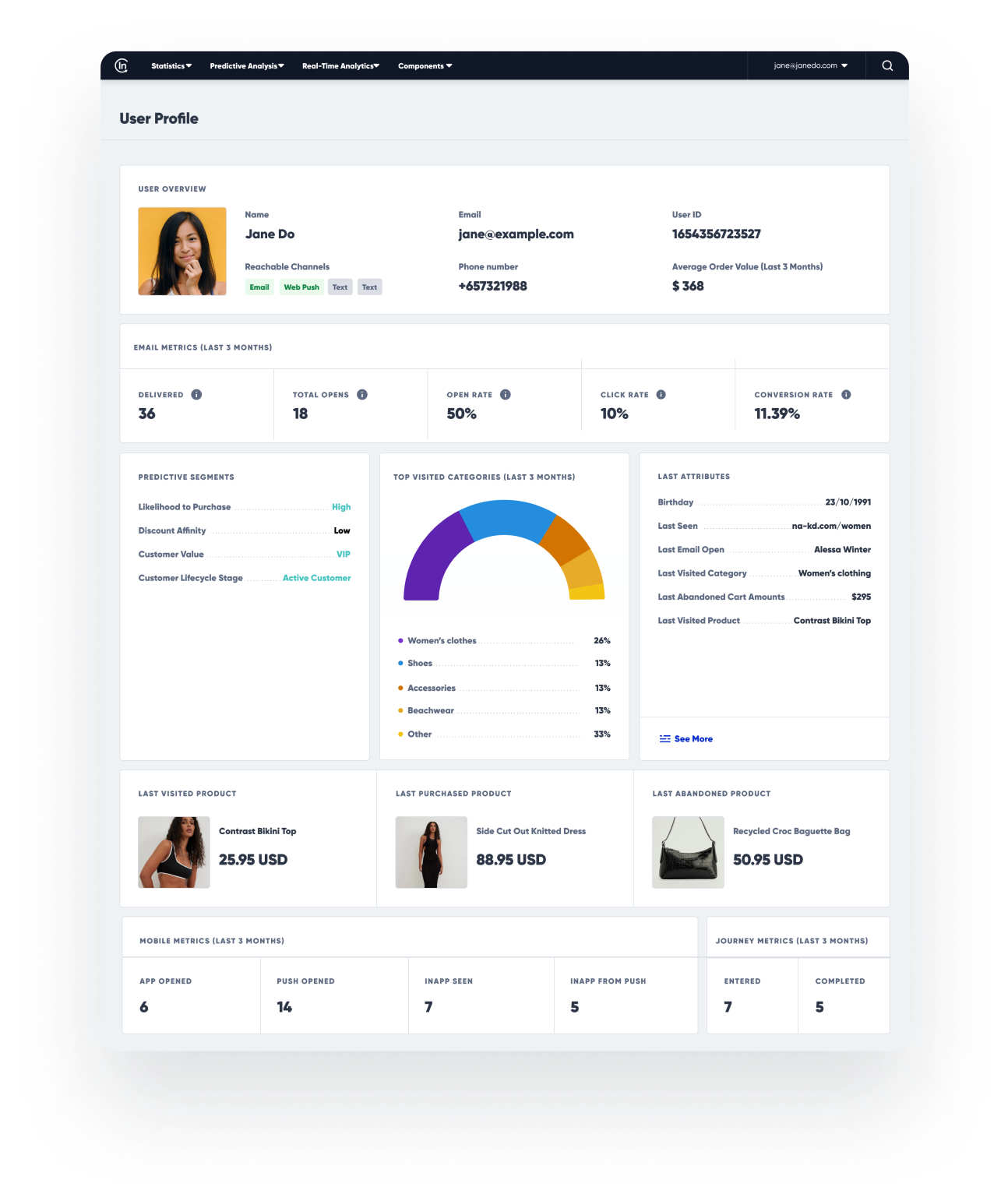
Our CDP builds a unified customer profile for each customer, showing their contact information, spending habits and amounts, reachable channels, and even predicted behaviors such as likelihood to purchase or engage on a specific channel. These profiles are the result of integrating data from varying, sometimes isolated sources spanning technological and organizational silos.
These 360-degree views of your customers set the stage for creating personalized, cross-channel experiences and enable you to tailor every element of the journey to users’ behaviors, interests, and preferences.
Bringing together all of that data can be a challenging task (more on that below). That’s why CDPs and other data integration solutions offer different ways to connect to and share data with other systems.
For example, Insider offers 100+ out-of-the-box integrations, a flexible API, and an experienced support team that can guide you through the normally difficult and time-consuming process.
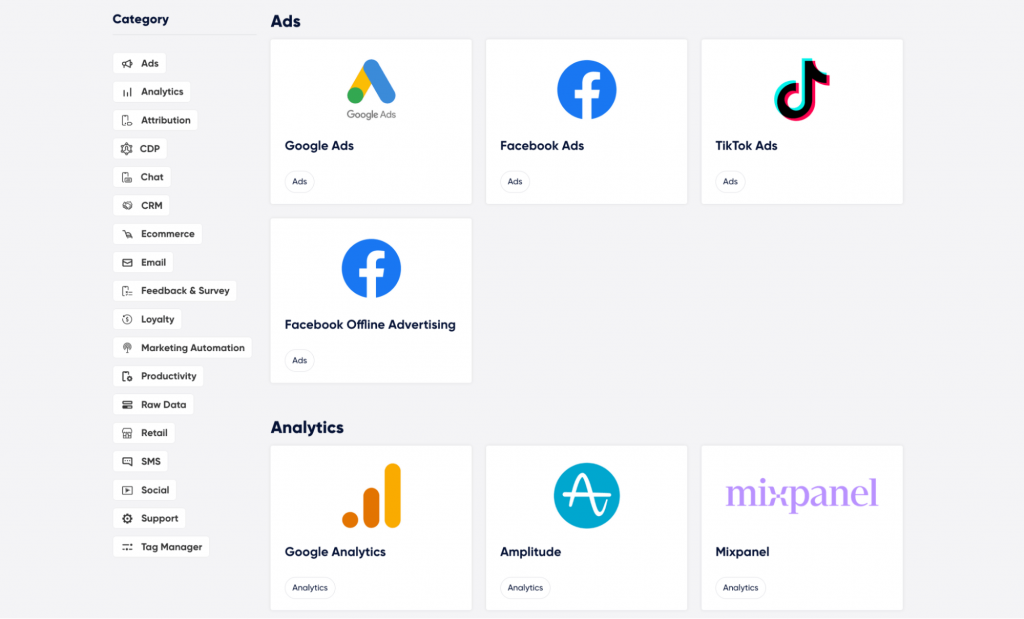
6 benefits of customer data integration
The following six benefits are some of the ways that a CDI strategy can positively impact your marketing and compliance efforts.
1. Dismantles data silos
Think of silos as distinct containers, each holding various pieces of the puzzle that together form a complete picture of your customer’s interactions and behaviors. Silos can represent diverse software platforms (e.g., CRMs, CMSs, analytics tools, and so on) and departments.
Integrating your data across silos allows you to streamline your marketing workflows because you no longer have to spend effort and engineering hours stitching together various source systems.
With all customer data centralized in a single location, your teams can focus on enhancing key metrics like customer retention, average order value (AOV), customer lifetime value (CLV), and return on ad spend (ROAS).
2. Enhances segmentation and customer insights
The ability to glean deep insights from your customer data is where the true power of CDI shines.
Once you have clean and accurate data in one place, you can uncover patterns and trends that were previously obscured by the clutter of disjointed data. This enables you to go beyond standard segmentation options and even predict future customer behaviors like discount affinity, likelihood of purchase, and lifecycle stage.
For example, enterprise marketing platforms like Insider provide a rich set of attributes (over 120 in the case of Insider) for segmenting your target audiences. You can segment according to behavioral, demographic, and technological factors, among others.
Insider’s predictive marketing engine even enables you to target customers based on their likelihood to purchase, likelihood to engage on a specific channel, discount affinity, and much more.
For example, Pegasus, one of the largest low-cost airlines in Europe, was able to increase their return on ad spend (ROAS) by 17% with Insider’s predictive segmentation.
3. Improves personalization
Personalizing your customers’ experience means tailoring every touchpoint — like social media ads, emails, push notifications, and more — to their individual desires, interests, and needs.
Customer data integration is the gateway to developing these personalized customer experiences. When done successfully, this leads to three key benefits for brands:
- Reduced friction. When customers feel the journey is set up for them, they’re less likely to lose interest or abandon their interactions. It’s also easier for them to find the content or products they need, which further improves their satisfaction.
- Enhanced trust and engagement. Showing that you understand your customers and know what they want makes them more likely to engage with your brand over the long term. It also makes them more likely to pay attention to what you say in your communications with them.
- Increased conversion rates and revenue. As you lower friction and build trust with customers, they’re more likely to convert in a situation that’s a win-win for them and for your brand. For example, Puma was able to increase conversion rates by 27% using Insider’s personalization suite.
4. Enables customer journey analytics
While any simple software can tell you how many users clicked on your email, SMS, or website content, analyzing a customer’s whole journey is much more challenging. This is especially true when your customer data is scattered across different solutions.
CDI removes a big part of the issue by bringing all your data together. Of course, you still have to actually analyze the data after data, which is why we’ve built advanced customer journey analytics features for Insider. In fact, our platform has been rated as the best customer journey analytics solution by G2 users.
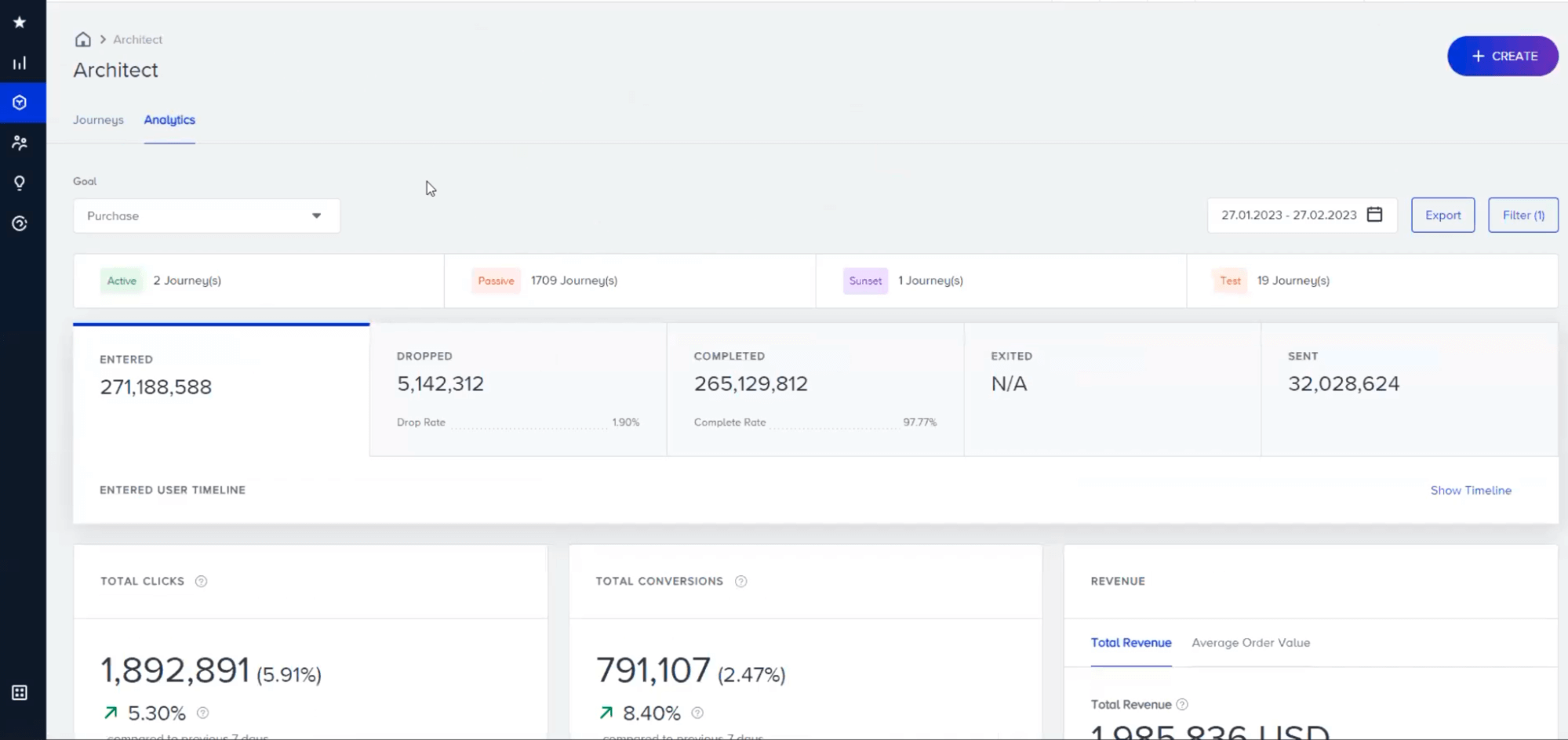
When used correctly, customer journey analytics lets you identify the most impactful touchpoints and channels of each stage of the journey. This means you can fine-tune campaigns based on a reliable and complete view of the customer journey to achieve better conversion rates and get a higher return on investment (ROI).
For a deeper dive into this topic, check out our complete guide to customer journey analytics.
5. Easier compliance and data governance
Centralizing all your customer data in one place allows you to better manage and protect that data. It also increases your accountability since you know where it’s actually stored and how it’s processed.
This makes it easier to follow applicable laws and regulations (like GDPR or CCPA) since you see exactly how your data is stored and processed. Lastly, good data governance has the added benefit of fostering trust with customers, as they’ll know data collection is handled safely and transparently.
6. A foundation for cross-channel marketing
Cross-channel marketing is a strategy that uses a variety of interconnected channels to engage customers, ensuring a consistent and cohesive brand experience across each one. An effective cross-channel marketing strategy is hard to achieve (and often impossible), without integrated and reliable customer data.
This approach allows businesses to connect with customers at various touchpoints, from social media and email to in-store interactions, creating a continuous and personalized journey.
Consistent and hyper-personalized messaging across channels builds trust and brand awareness, while customers’ behaviors and direct feedback allow you to gain a detailed understanding of their experience through reporting and analytics.
For example, Sports Retail Group used Insider’s CDP to integrate their customer data. With that foundation in place, they also used our platform’s personalization capabilities to create consistent experiences across their website and web push notifications. This enabled them to reduce their campaign launch times by 80% and achieve a 37x ROI in less than a year.
The biggest challenges of data integration
Customer data integration (CDI) is not without its challenges. Below are some common complexities teams face when aggregating customer data.
Navigating data compatibility
Compatibility issues arise from the diversity of systems and tools today’s organizations use, from newer software to legacy systems. Teams must reconcile varying formats like XML, JSON, CSV, and many more to transform the data into a single, usable format while maintaining data accuracy and consistency. This process of data reconciliation is crucial in ensuring that disparate datasets can be effectively merged.
For example, one department may use a modern cloud-based CRM, while another relies on an outdated legacy solution. This forces many teams to find complex workarounds to use data from different sources while ensuring data security and protecting against potential breaches.
Managing large data volumes
The sheer amount of first-, second-, and third-party data that can be generated across multiple platforms and tools can be challenging to manage. Between processing, analysis, and ensuring accuracy and data quality, workflows can easily get very complex, requiring either in-house or third-party expertise.
Plus, you need systems and processes that are not only robust but also scalable, capable of expanding to accommodate increasing volumes of data. Again, throughout this entire process, you must pay attention to security and privacy to ensure compliance with all relevant data protection regulations. One way to do this consistently and comprehensively is by getting ISO 27001 compliance certification, which essentially provides you with a framework for handling data security and privacy regardless of the scope of your operations or needs. As well as augmenting your internal processes, it’s a factor that third-party stakeholders will take into account when weighing up your firm’s trustworthiness.
Addressing change management
When a company decides to integrate data from various departments, it may face resistance from teams accustomed to operating in silos. Each department might have its own way of handling data, and aligning these varied practices into a cohesive system requires not just technical solutions, but also a change in mindset and workflow.
This transition can be particularly challenging in larger organizations where communication gaps and a reluctance to adapt to new processes can significantly slow down data aggregation efforts.
Overcoming these hurdles requires strong leadership, clear communication, and (potentially) training programs to help staff adapt to new data handling practices. That’s why at Insider, we have an excellent Partner Experience Team to guide you through the integration process as smoothly as possible. If you’re interested, check out our in-depth guide to avoiding the martech implementation headache for more details on how our team ensures hassle-free implementation and fast time-to-value.
The different types of data integration tools
CDI can be a very broad and amorphous category. For the purpose of this guide, we can organize CDI tools into two categories:
- Customer Data Platforms (CDPs). These are designed to centralize customer data from different sources, creating a unified and accessible database. Some CDPs like Insider are designed with marketing use cases in mind, like improving customer engagement and revenue through data-driven personalization across many channels. This is an integral part of effective marketing data transformation. This process involves taking raw customer data and converting it into a more usable format for the purpose of generating meaningful insights. Thus, it enhances data-driven marketing strategies by making data more understandable, relevant, and actionable. Others, like Segment, Tealium, and Treasure Data are focused more on the technical side of data management, including governance, cleaning, and analysis, and cater to data analysts and scientists.
- Data management and storage solutions. These can be data warehouses like Google’s BigQuery or technical tools like Talend, Informatica, and Boomi. They’re built for developers and data experts who want to integrate and manage their data, without using it to run marketing campaigns (at least not in the same platform). Like CDPs, some of these platforms also create a 360-degree view of your customers but don’t have built-in activation tools or channels.
Which one you use depends on your business needs and the skills of your team.
For example, if you’re just trying to integrate your customer data and segment your audiences, most CDPs can be a good fit. However, if you also want to use your data to boost customer engagement, conversions, and revenue through targeted marketing, a campaign CDP like Insider is likely to be the best fit.
Besides standard CDP capabilities like data unification, identity resolution, and segmentation, Insider also gives you access to:
- 12+ native channels, like web, email, push notifications, SMS, WhatsApp, and more from the same platform.
- Advanced personalization features for delivering tailored content, messaging, and product recommendations on each channel.
- A cross-channel customer journey builder that enables you to tie all touchpoints into a consistent and relevant experience for each customer.
As a result, you can build, automate, and analyze campaign results across all channels from the same place. This enables you to integrate and activate your customer data, without overcomplicating your martech stack and workflows.
Lastly, it’s worth noting that effective data integration hinges on the ability to smoothly integrate with a multitude of tools and systems.
That’s why we’ve built native integrations with over 100+ tools and systems for Insider. Beyond these native integrations, Insider’s platform offers a flexible API that enables connections with virtually any system. Our customer support team also helps teams achieve efficient and hassle-free data integration by following best practices tailored to their specific needs and business processes.
As a result, G2 users rate Insider as the best CDP in terms of time to value, ease of use, ease of setup, and support quality.

Customer data integration is only a foundation
Having a single source of truth for all customer data lays the groundwork for successful personalization, yet it’s only the beginning. A CDP or another storage solution by itself is the first step towards the ultimate goal of creating individualized experiences for customers across all channels.
With your unified data in place, you have a solid foundation for decision-making and achieving that goal. However, the actual implementation of cross-channel marketing requires different tools that enable you to:
- Reach customers on a variety of channels, like email, push notifications, SMS, WhatsApp, and more.
- Personalize the content, messaging, and product recommendations that they see across all touchpoints.
- Build personalized journeys that take into account each customer’s preferred communications channels and engagement times.
This multitude of tasks is why we’ve built both data consolidation and data activation capabilities for Insider. As a result, our platform can help you bring all your customer information together in one place and then use it to build personalized, cross-channel campaigns across your website, mobile app, email, online ads, push notifications SMS, WhatsApp, and many other touchpoints.
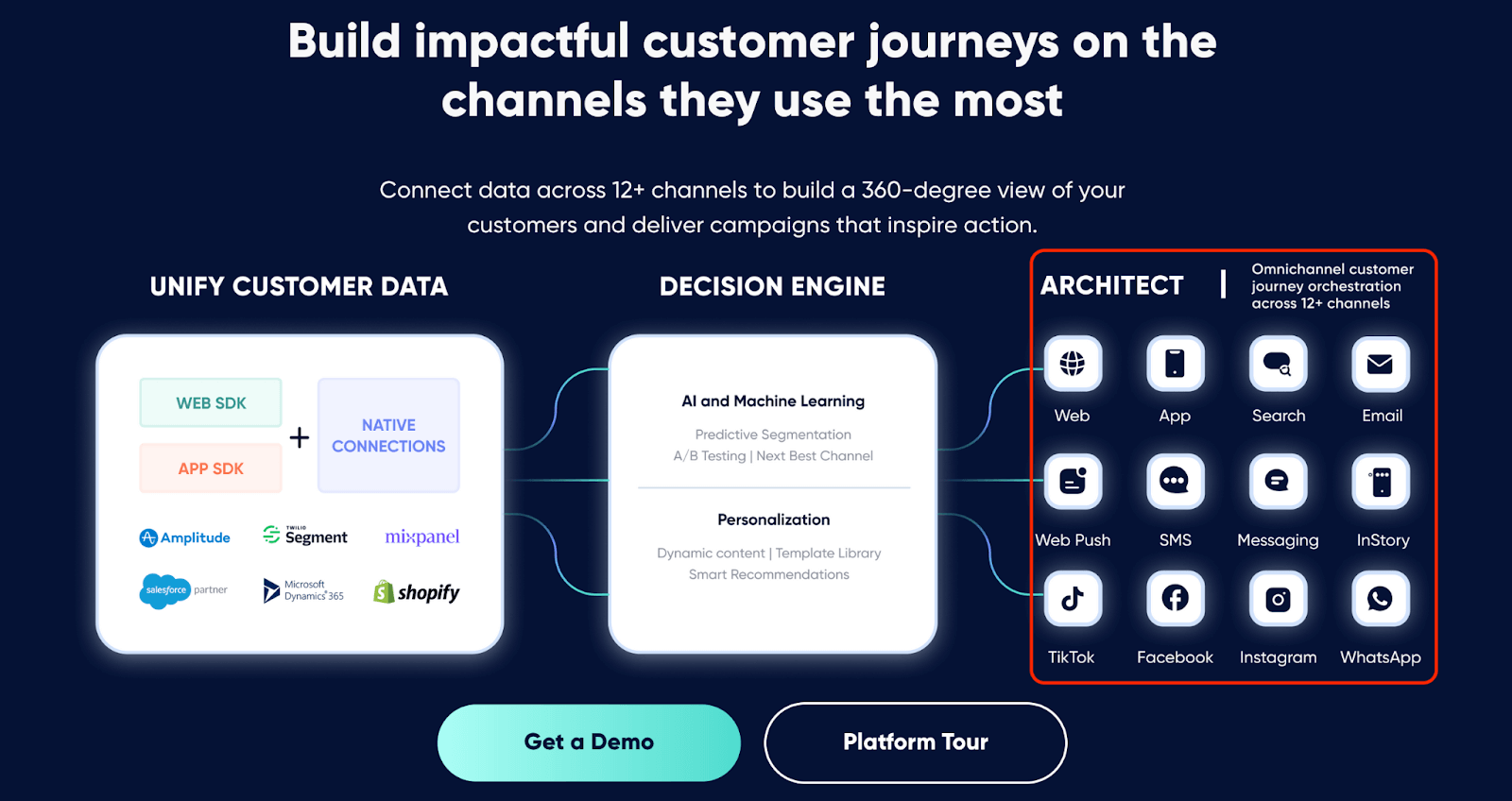
If you’re interested, we’ve explored these capabilities in-depth in our guides to:
- Personalized marketing.
- Omnichannel marketing automation.
- Personalizing the entire customer experience.
Integrate and activate your customer data with Insider
Insider’s Actionable CDP, personalization capabilities, and customer journey builder enable you to:
- Implement your customer data integration strategy and aggregate information from diverse sources. Insider’s CDP connects to over 100 online and offline data sources. You can unify everything from in-store purchase data to email interactions and website activity, all into a single, accurate customer profile.
- Craft personalized experiences across multiple channels. Insider supports a wide array of digital channels, including web and app push notifications, email, SMS, WhatsApp, and on-site, all from one integration platform. This allows for omnichannel marketing campaigns, ensuring a consistent customer experience without needing to constantly switch between platforms or stitching different types of data manually.
- Leverage AI for predictions and optimization. Insider’s AI-powered intent engine helps predict the best channels for communication, optimal timing for sending each message, likelihood of purchase, and much more. Insider’s customer journey builder also uses AI to help you build consistent journeys across all touchpoints based on your unified data.
- Profile even anonymous users. Insider goes beyond standard customer profiles. It also creates profiles for anonymous visitors, allowing for real-time personalization of their experience. For example, you can tailor their website experience and send them personalized web push notifications, which drastically improves conversion rates and reduces CAC.


